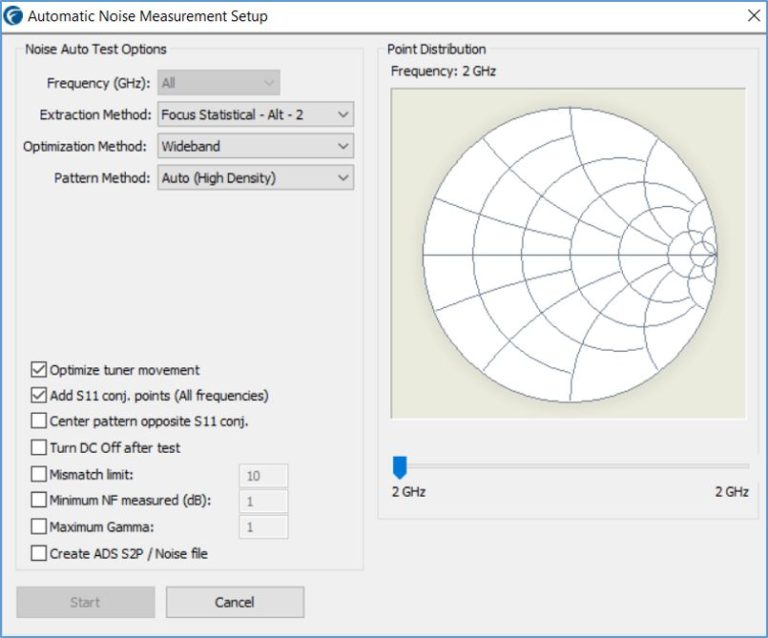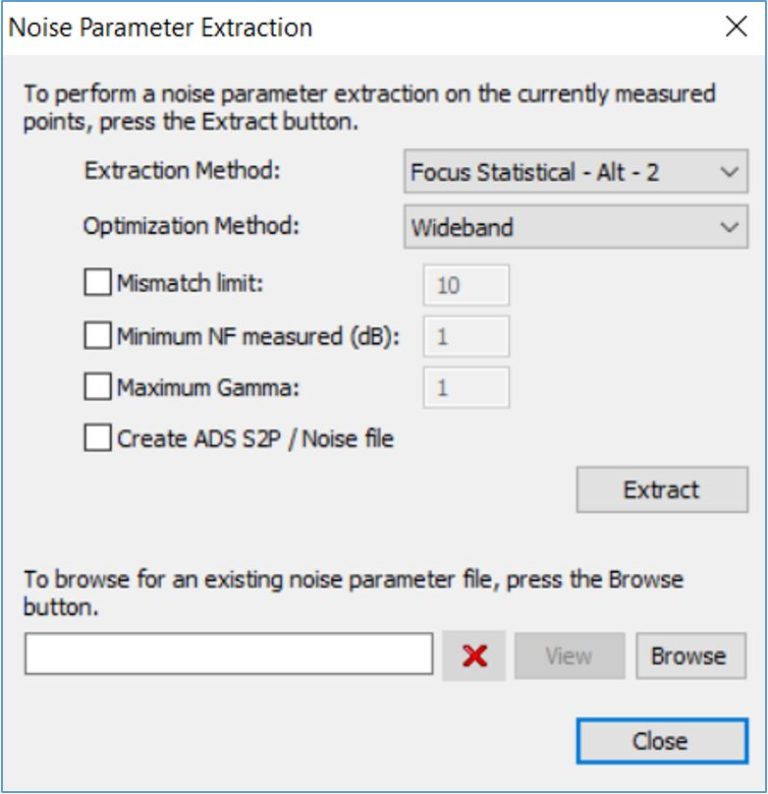This website uses cookies so that we can provide you with the best user experience possible. Cookie information is stored in your browser and performs functions such as recognising you when you return to our website and helping our team to understand which sections of the website you find most interesting and useful.
What are the different noise extraction methods available
Symptoms / Solutions: FDCS offers different extraction methods for extracting the noise parameters. The extraction methods differ in the algorithm used for extracting the noise parameters from the measurement data and also based on the number of measured impedance points considered for extraction.
The user can launch noise figure measurements and the subsequent noise parameter extraction using the Auto Test option in the Noise measurement project as shown in Figure 1.

Figure 1
The Auto Test option opens a new window as shown in Figure 2.

Figure 2
Noise extraction methods
There are five extraction methods possible. If inconsistent results are obtained with one, another one can be attempted.
– Focus Standard Method: Default method of noise parameter extraction. Uses Singular Value Decomposition mathematics to determine noise parameters. This method requires at least 8 measured points for extraction.
– Focus Multi-Extraction: This extraction method performs three separate extractions, one each for NFmin, Rn, and Gopt. Each of these extractions uses a different selection of measured points. This method requires at least 20 measured points for extraction.
– Focus Statistical (Std, Alt-1, Alt-2): These three extraction methods each down sample the measured data using different criteria (to 20, 22, and 23 points respectively) and perform many extractions using different combinations of these (down-sampled) measured data. The resulting extractions are then statistically analyzed and a final set of noise parameters are produced. These methods require at least 14 measured points for extraction. However, statistical extraction performs best when 40+ measurements are considered.
Choice of impedance pattern and extraction method
– DUT
The pattern decides the density and distribution of the impedance points that will be considered for the measurement. In case a device with high gamma is being measured, high density pattern is recommended. Here the tuner moves to higher number of impedance points as compared to the low density option.
For the DUT measurements, one of the statistical techniques with high density is recommended. Extraction methods with statistical algorithms (Std, Alt1, Alt2) need the density to be chosen as high, as these extraction techniques requ ire more number of measured impedance points.
The S11 conjugate feature adds the S11 conjugate of the DUT to the pattern at each of the frequency measured with one point for each frequency. Once high density is selected, this option can be ignored.
– Receiver Cal
For the receiver cal, Focus Standard method with low density can be used.
Noise parameter extraction with current measurements
To extract the noise parameters from the current measurements, the Noise extraction option can be used as shown in Figure 3.

Figure 3

Figure 4
This opens the Noise parameter extraction window and the user can specify the algorithm for extraction, similar to the ones available in the Auto Test option.
Additional information: Additional information can be found in the FDCS Operation manual in \Focus Microwaves\Load Pull Explorer\Manuals.
Keywords: Noise measurement, Noise extraction, Noise wizard
Last date modified: 13th April, 2017

